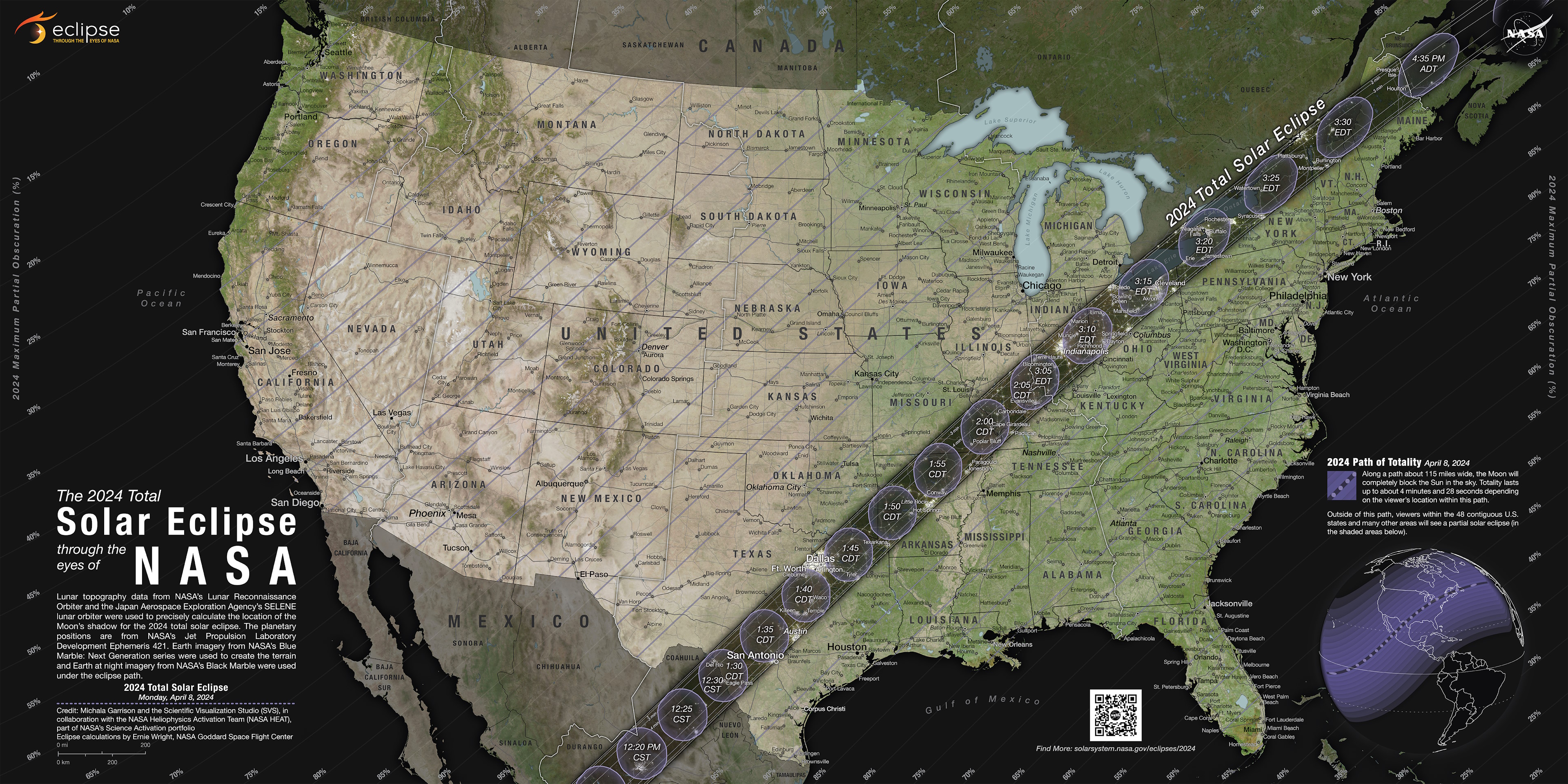NASA is joining with Twitch, Microsoft, and Epic for a livestream event featuring eclipse-themed Minecraft and Fortnite games
The Look Up! event will feature a mix of the solar eclipse and streamers playing eclipse-themed games.
![Here’s a variation on creating a time-sequence composite of the August 21, 2017 total solar eclipse In this case, time runs from left to right, from the last filtered partial phases I shot, through unfiltered shots of the rapidly changing last glimmer of sunlight disappearing behind the advancing Moon at “Second Contact,” forming “Baily’s Beads, to totality at centre] The sequence continues at right with the Sun emerging from behind the Moon in a rapid sequence at “Third Contact,” followed by two post-totality filtered partials to bookend the total eclipse images The C3 limb had a beautiful array of pink prominences The Contact 2 and 3 images were taken in rapid-fire continuous mode and so are only fractions of a second apart in real time Most are 1/4000th second exposures The totality image is a blend of 7 exposures, from 1/1600 second to 1/15 second to preserve detail in the corona from inner to middle corona These were aligned, and merged into a smart object and blended with a Mean combine stack mode It is not an HDR image I added a couple of layers of High Pass filtering to sharpen structure in the corona The partials are 1/2500-second exposures through a Thousand Oaks metal-on-glass solar filter for the yellow colour All were taken through an Astro-Physics 106mm apochromatic refractor with a 085x field flattener/reducer for an effective focal length of 500mm at f/5 The flattener added some flares off the diamond rings The telescope was on an AP Mach One equatorial mount, aligned and tracking the sky, a rare circumstance for me for any total solar eclipse The placement of the frames here only roughly matches the actual position and motion of the Sun across the sky during the time around totality Partials and C2 and C3 images layered into Photoshop and blended into the background totality image with a Lighten blend mode, and masked to reveal just the wanted bits of each arc The site was north of Driggs, Idaho in t(Photo by: Alan Dyer/VW Pics/UIG via Getty Images)](https://cdn.mos.cms.futurecdn.net/5nFEn97De7j4XBr35ZTiwJ.jpg)
There's a big eclipse coming on April 8—you may have heard something about it already—and if you'd like to watch but don't happen to live in an area where it's going to be properly visible, NASA and Twitch have you covered. And not just with an eclipse livestream: They've partnered with Epic Games, Microsoft, and the National Esports Association for a "Look Up!" event that will feature streamers playing eclipsed-themed games in Minecraft and Fortnite.
The Minecraft game mode, called Look Up!, will feature "educational elements" as players solve puzzles and answer eclipse-themed questions as they attempt to escape the moon and get to Earth before the eclipse happens—it's probably not as cool to watch on the moon, after all. In Fortnite, players will "venture through different areas that can be accessed by moving through different parts of the eclipse’s path of totality." The gameplay streams will appear alongside live footage of the eclipse provided by NASA "in a lively co-stream."
Catching it on stream may not be the ideal way to watch such a rare event—you can watch eclipse videos anytime, really—but as NASA explains, totality is only visible within a relatively narrow band running across North America. Outside that band, you'll see a partial eclipse, with the sun less obscured the further out you are. For people on the West Coast, it might get a little shady, while folks in Europe and Asia get nothing because it's going to be dark there anyway.
I happen to live along the path of totality, so I will be outside for the event (something I should probably tell my bosses about at some point), but even so I think this is a very cool offering for people who aren't so fortunate, and tying it in with two of the most popular games on the planet is a smart way to attract people to the event.
One thing to note for those who plan to watch the event directly: Looking up during an eclipse is actually something you definitely should not do unless you have eclipse glasses or a solar viewer. You can also opt for an indirect viewing method, such as a pinhole projector. And you really, really do not want to look at the sun through a camera, binoculars, or a telescope—doing so will cause near-instant damage to your eyes. NASA has a good rundown on how to view the eclipse safely.
The Look Up! livestream will be available on the NEA's Twitch channel, and will run from 2-4 pm ET on April 8.
Keep up to date with the most important stories and the best deals, as picked by the PC Gamer team.

Andy has been gaming on PCs from the very beginning, starting as a youngster with text adventures and primitive action games on a cassette-based TRS80. From there he graduated to the glory days of Sierra Online adventures and Microprose sims, ran a local BBS, learned how to build PCs, and developed a longstanding love of RPGs, immersive sims, and shooters. He began writing videogame news in 2007 for The Escapist and somehow managed to avoid getting fired until 2014, when he joined the storied ranks of PC Gamer. He covers all aspects of the industry, from new game announcements and patch notes to legal disputes, Twitch beefs, esports, and Henry Cavill. Lots of Henry Cavill.


